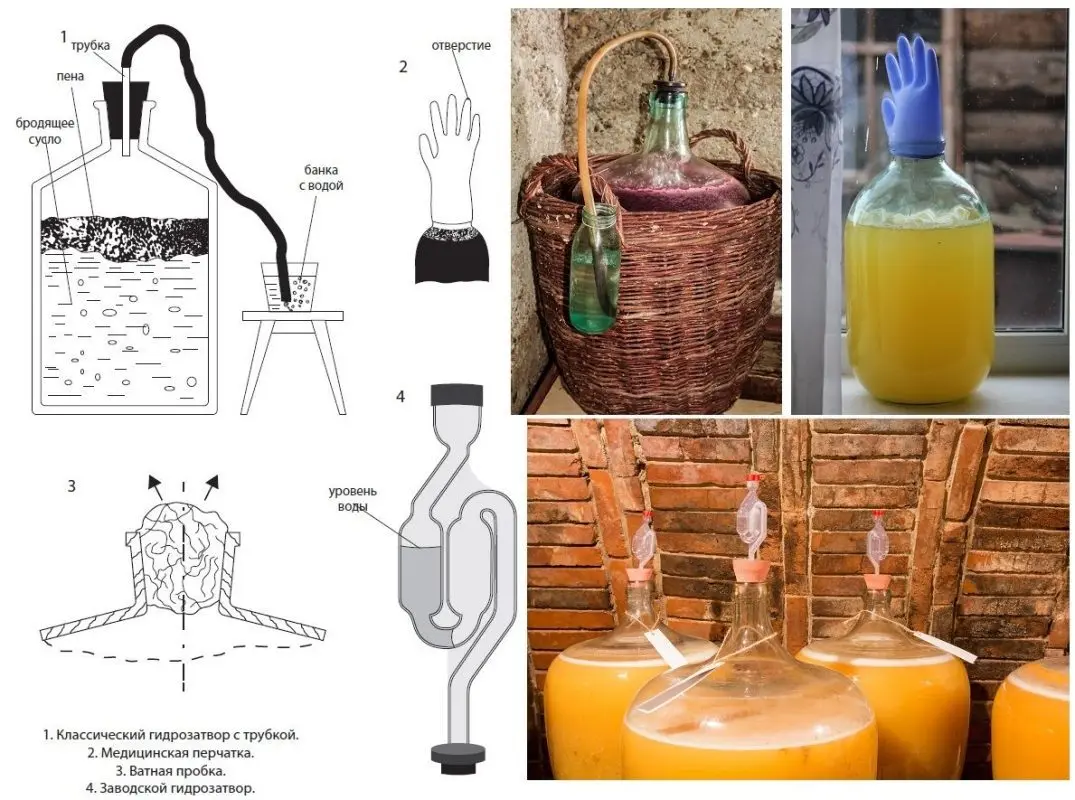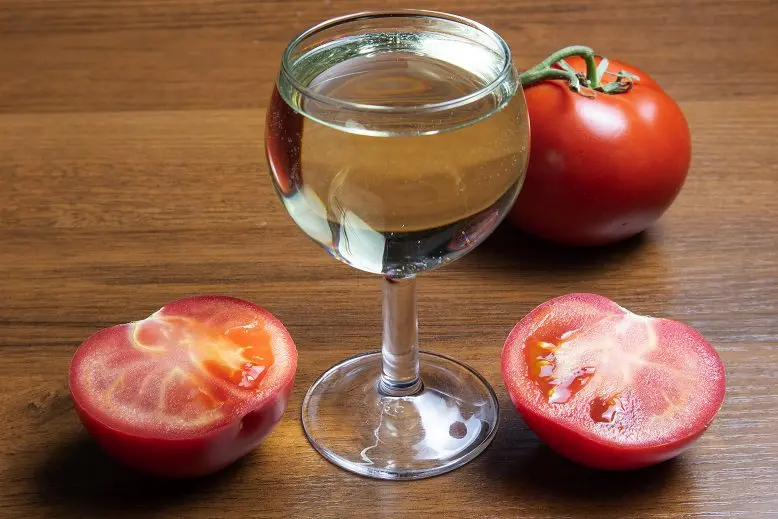By chemical composition, tomatoes are close to apples and can be used in winemaking. The only drawback is low sugar content, but this problem is solved by adding beet sugar or fructose. We will look at the recipe for tomato wine made from fresh tomatoes or pasta. The drink turns yellowish in color closer to white with an original aftertaste.
We need ripe tomatoes of any variety (affects the shade) or pasta with a maximum dry matter content. Previously, the fruits must be sorted out, removing the stalks, rotten, moldy and unripe parts. Then wash with warm water. Sterilize all used containers with boiling water and soda and wipe dry to avoid mold.
Ingredients:
- tomatoes – 5 kg (or pasta 1 kg);
- water – 1 liter (5 liters for pasta);
- sugar – 1,5 kg;
- citric acid – 5 grams;
- unwashed raisins (fresh berries) – 50 grams (can be replaced with wine yeast).
To make wine from tomato paste, it is enough to dilute the paste in warm water (up to 30 ° C) according to the proportions of the recipe. Further technology is the same as in the case of fresh tomatoes, only without the second stage.
tomato wine recipe
1. If there is no wine yeast, make a leaven 3-4 days before working with tomatoes. To do this, put raisins or unwashed crushed fresh berries (grapes, strawberries or raspberries) into a jar, add 10-15 grams of sugar and 100 ml of water. Mix. Cover the bottle with gauze, leave for 3-4 days in a dark place at room temperature. When foam, hiss and a slight smell of fermentation appear, the starter is ready. The best sourdough is obtained from berries, raisins are processed with preservatives and do not always ferment.
2. Squeeze juice from tomatoes. This can be done with a juicer or twist the tomatoes in a meat grinder, then squeeze the puree through a couple of layers of gauze.
3. Pour the tomato juice (diluted paste) into a fermentation container. Add water (if the wine is made from juice), 1 kg of sugar, citric acid and sourdough (wine yeast diluted according to the instructions). At least 25% of the container volume must remain free.
4. Mix, install a water seal or a rubber medical glove with a hole (made with a needle) in one of the fingers. Transfer the bottle to a dark room (can be covered) with a temperature of 18-25°C.

5. After 4 days, add 250 grams of sugar. To do this, remove the water seal, drain 300-400 ml of tomato must, dilute sugar in it, pour the resulting syrup back and install the water seal again.
6. After 4 days, repeat the procedure, adding the remaining 250 grams of sugar.
7. Fermentation lasts 25-60 days. Then the water seal stops emitting gas (the glove deflates), a layer of sediment appears on the bottom of the container, and the wine becomes lighter. After fermentation, drain the young tomato wine from the sediment through a straw into another clean container.
If the fermentation does not stop after 50 days from the date of installation of the water seal, the wine must be removed from the sediment, then put back to ferment under the water seal, otherwise bitterness may appear if it is left on the sediment for a long time.
8. Appreciate the sweetness. If desired, add sugar to taste or fix with alcohol (vodka) – 2-15% of the volume.
9. It is advisable to fill storage containers to the top so that the wine does not come into contact with air. Close hermetically (for reinsurance against repeated fermentation, you can keep the drink under a water seal for a couple of weeks) and transfer to a dark, cool place with a temperature of 5-16 ° C.
10. Withstand 4-6 months. Periodically filter from sediment at the bottom (pour through a tube into another container) every 2-3 weeks (then less often) as it appears.
11. After the sediment stops falling, pour the wine from the tomato into bottles, seal it tightly with corks. In the refrigerator or cellar, the drink can be stored for 2-3 years. Fortress – 10-12%.










